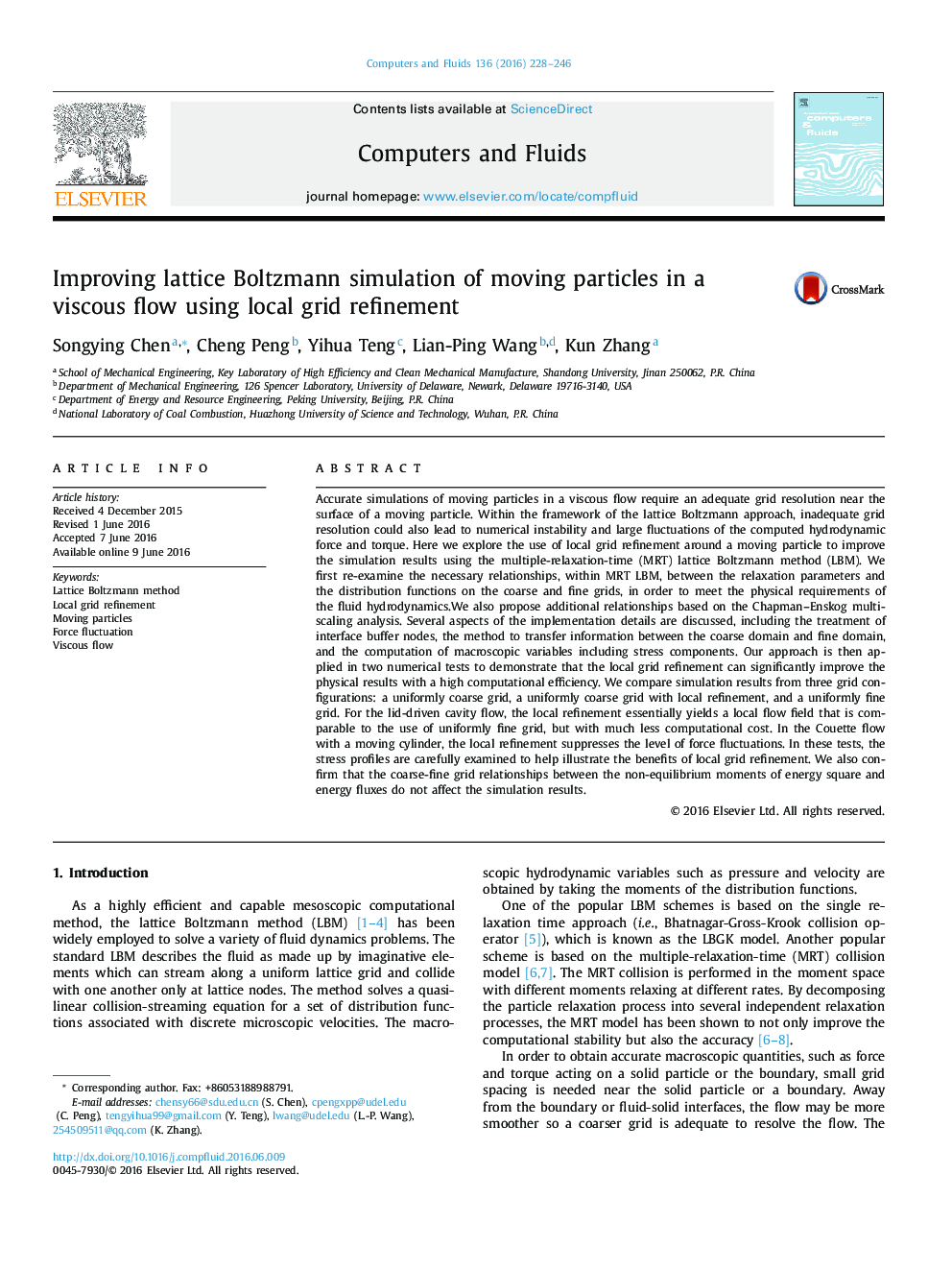| Article ID | Journal | Published Year | Pages | File Type |
|---|---|---|---|---|
| 7156650 | Computers & Fluids | 2016 | 19 Pages |
Abstract
Accurate simulations of moving particles in a viscous flow require an adequate grid resolution near the surface of a moving particle. Within the framework of the lattice Boltzmann approach, inadequate grid resolution could also lead to numerical instability and large fluctuations of the computed hydrodynamic force and torque. Here we explore the use of local grid refinement around a moving particle to improve the simulation results using the multiple-relaxation-time (MRT) lattice Boltzmann method (LBM). We first re-examine the necessary relationships, within MRT LBM, between the relaxation parameters and the distribution functions on the coarse and fine grids, in order to meet the physical requirements of the fluid hydrodynamics.We also propose additional relationships based on the Chapman-Enskog multi-scaling analysis. Several aspects of the implementation details are discussed, including the treatment of interface buffer nodes, the method to transfer information between the coarse domain and fine domain, and the computation of macroscopic variables including stress components. Our approach is then applied in two numerical tests to demonstrate that the local grid refinement can significantly improve the physical results with a high computational efficiency. We compare simulation results from three grid configurations: a uniformly coarse grid, a uniformly coarse grid with local refinement, and a uniformly fine grid. For the lid-driven cavity flow, the local refinement essentially yields a local flow field that is comparable to the use of uniformly fine grid, but with much less computational cost. In the Couette flow with a moving cylinder, the local refinement suppresses the level of force fluctuations. In these tests, the stress profiles are carefully examined to help illustrate the benefits of local grid refinement. We also confirm that the coarse-fine grid relationships between the non-equilibrium moments of energy square and energy fluxes do not affect the simulation results.
Related Topics
Physical Sciences and Engineering
Engineering
Computational Mechanics
Authors
Songying Chen, Cheng Peng, Yihua Teng, Lian-Ping Wang, Kun Zhang,
